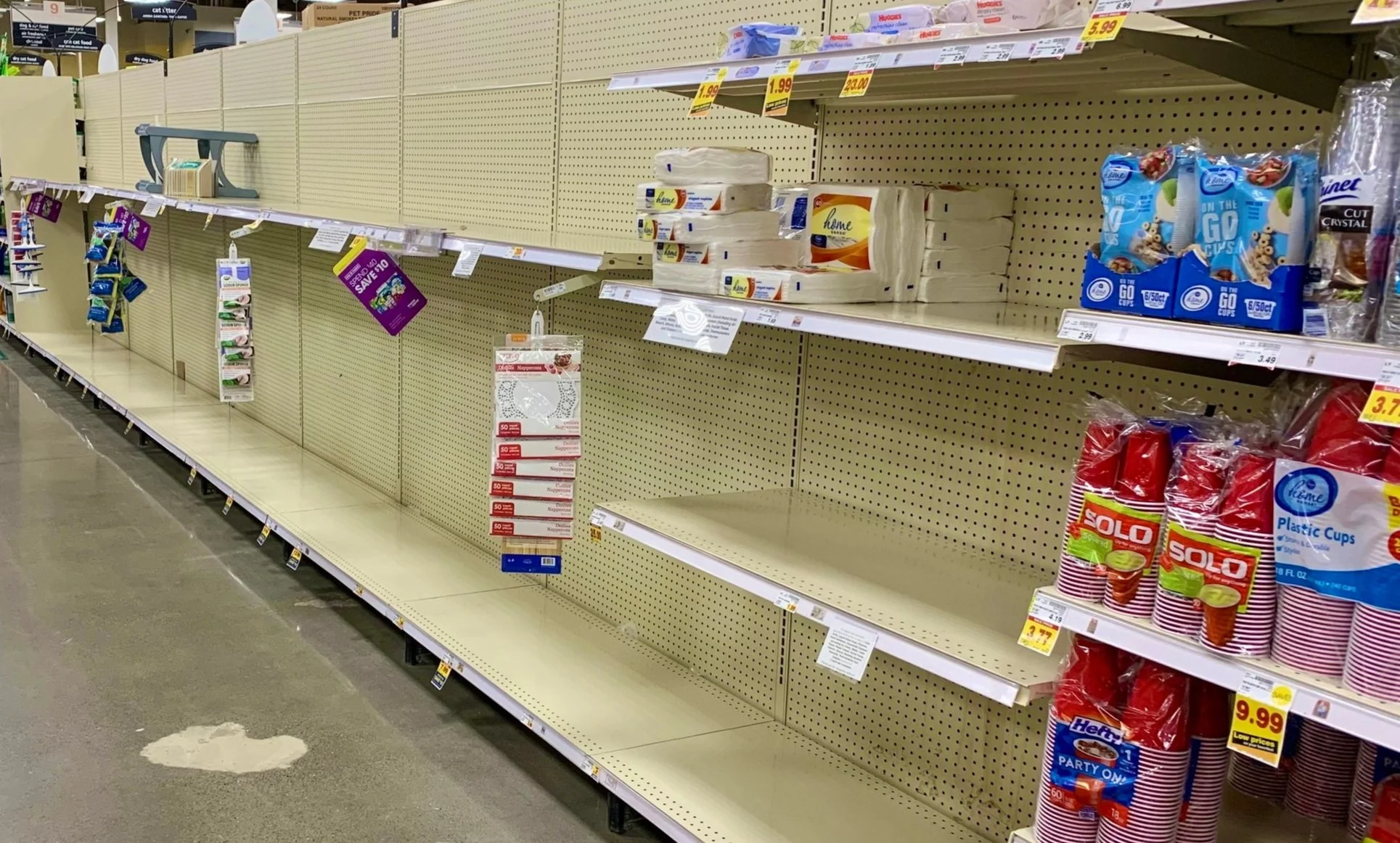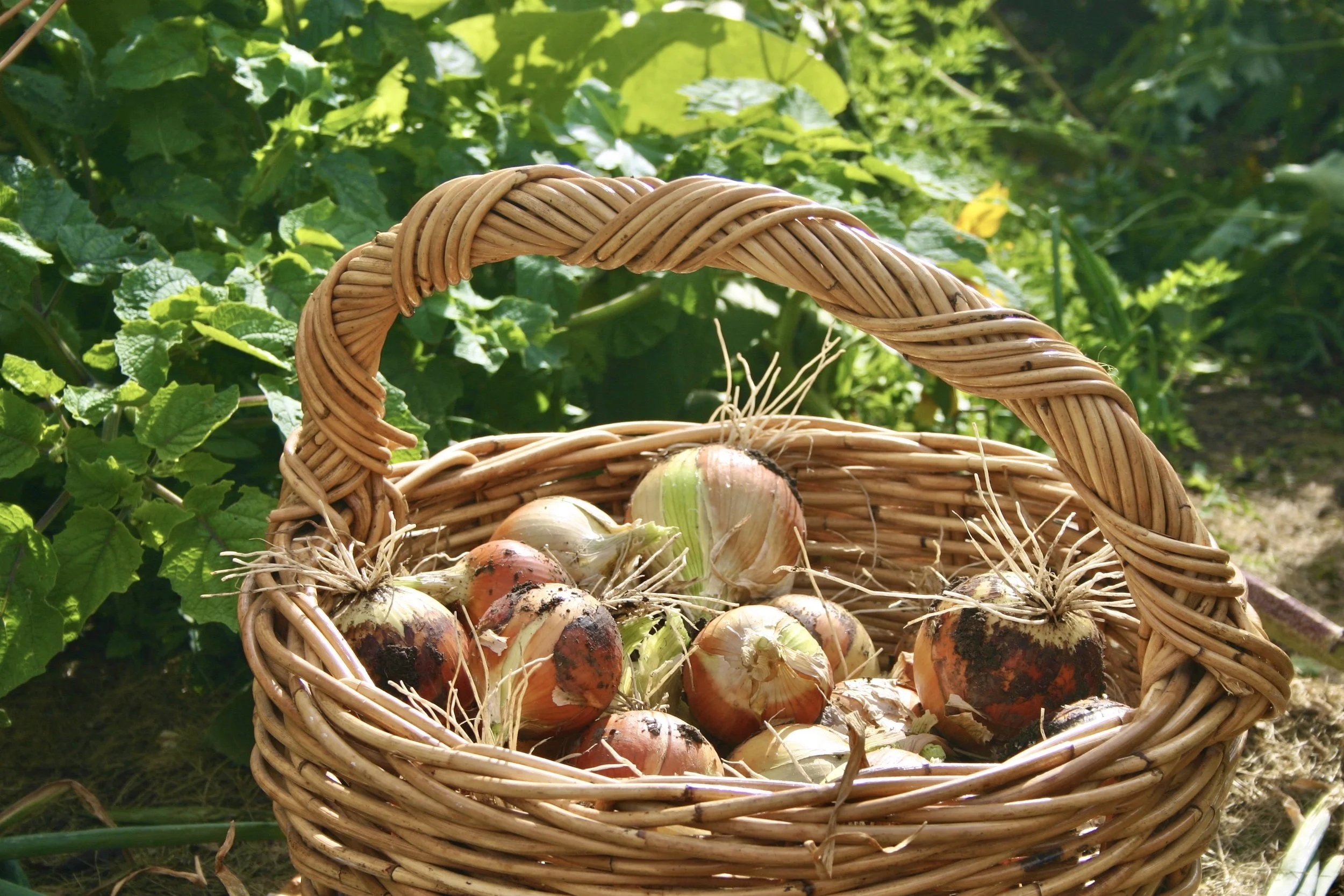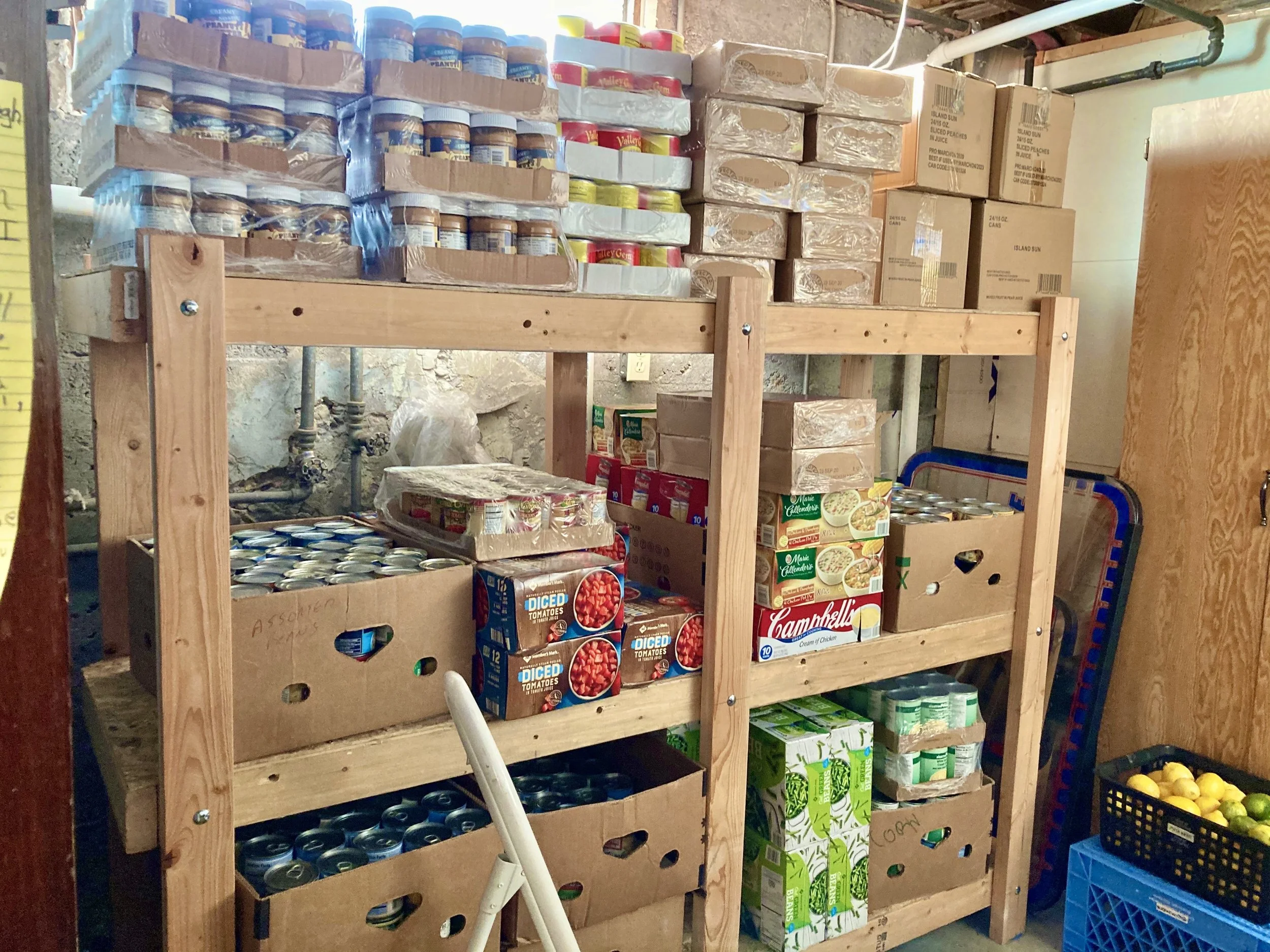Padding the Pantry
Essential Elements of an Emergency Food Storage Plan
Lander, Wyoming
Photography contributed by Amy Grisak
What happens when the power goes out for days because of a storm or a local or national emergency? How long can you feed your family without depending on an outside source?
Living in Wyoming, or anywhere in the northern parts of the country, there are days when it’s snowing horizontally and not worth the risk to venture into town for groceries. For folks in rural communities, running to the store can be an all-day outing. It’s nice to have staples on hand so you don’t have to think twice about it.
Our only security is what we can provide for ourselves. And after living through the supply chain fluctuations over the past several years, we understand the reality that having stocked shelves at the grocery stores is not a guarantee. It takes preparation to create a well-stocked food storage plan, and the best time to start is now.
How to Start
The first step for your long-term food storage shopping list is to keep track of what your family eats on a daily and weekly basis. Store what you use in realistic amounts. This provides a better understanding of what you’ll need for a month, three-month, or even year-long plan.
It’s difficult enough to buy groceries these days, so adding additional food to build a surplus can seem daunting. Start by adding a few things to your cart each week to reach a three-month supply. You can always expand once you have enough.
There are recommended amounts based upon well-versed sources in what it takes to feed the average household of four people for three months or one adult for a year. (If there is not a specific amount after the listed food, it’s more of a personal preference.)
While it’s wonderful to have a freezer full of vegetables from the garden or game from hunting, keep in mind that it’s a fragile system. In the case of a long term situation, a generator will buy you time but will only last so long. This list focuses on food that does not require electricity to maintain its quality.
Bulk Staples
Includes the basics for baking and calories required to survive. Don’t purchase what you won’t use! Store in food-safe containers.
One Person/3 months
Flour - 10 pounds
Wheat - 65 pounds (Grind for baking, as well as salads and breakfast dishes.)
Cornmeal - 13 pounds
Sugar - 13 pounds
Brown sugar - 1/ 1/2 pounds
Molasses - 1/4 pound
Honey - 1/4 pound (Honey is great for baking, and soothes sore throats and coughs.)
Maple Syrup - 1 quart
Baking Soda - 1/4 pound
Baking Powder - 1/4 pound
Corn Starch - 1/4 pound
Dried beans - 10 pounds
Lentils - 1 1/4 pounds
Dried Bean Soup Mix - 1-3 pounds
Dried Pasta - 15 pounds
Rice - 25 pounds
Powdered Milk - 25 pounds (Repackage in jars with oxygen packs and use a vacuum sealer. Lasts up to two years as long as they’re kept in a dark area.)
Evaporated Milk - 5 cans
Sweetened Condensed Milk - 1 can
Iodized Salt - 1/4 pound
Cooking Oil - 1 gallon
Olive Oil - 1/2 gallon
Vinegar - Apple cider vinegar - 1/2 gallon
White vinegar - 1/2 gallon
Dry Yeast - 1/3 pound
Coffee - 10-20 pounds (Depending on the level of addiction!)
Tea
4 People/3 months
Flour - 30 pounds
Wheat - 200 pounds
Cornmeal - 40 pounds
Sugar - 40 pounds
Brown sugar - 5 pounds
Molasses - 1 pound
Honey - 5 pounds
Maple Syrup - 3 quarts
Baking Soda - 1 pound
Baking Powder - 1 pound
Corn Starch - 1 pound
Dried beans - 40 pounds
Lentils - 5 pounds
Dried Bean Soup Mix - 5-10 pounds
Dried Pasta - 45 pounds
Rice - 70 pounds
Powdered Milk - 70 pounds
Evaporated Milk - 15 cans
Sweetened Condensed Milk - 5 cans
Iodized Salt - 1 pound
Cooking Oil - 3 gallons
Olive Oil - 1 gallon
Vinegar - Apple cider vinegar - 1 gallon
White vinegar - 1 gallon
Dry Yeast - 1 pound
Coffee - 10-20 pounds
Tea
Meat
Track your family’s daily intake of meat and calculate what you’ll need in terms of pounds. This can include canned tuna, chicken, beef, or home-canned meat.
Freeze-dried meats are often sold in 10-pound cans and can be easily incorporated into meals.
Don’t forget jerky and other dried meat!
Canned Goods
Include both goods from the store and home-canned, if capable.
One Person/3 months
Fruits and Vegetables - 100 quarts (a mixture of both fruits and vegetables)
Beans - 8-12 cans (these are more convenient than dried beans)
Tomato Sauce and/or Stewed Tomatoes - 10-20 cans (or half the amount in quarts)
4 People/3 months
Fruits and Vegetables - 320 quarts
Beans - 24-36 cans
Tomato Sauce and/or Stewed Tomatoes - 30-60 cans
Packaged Foods
While these are not absolute necessities, they’re handy and help vary the menu.
One Person/3 months
Peanut Butter - 1 ¼ pounds
Jellies or Jams - 1 pound
Salad Dressing - 1 cup
Mayonnaise - 20 ounces
Ketchup - 20 ounces
Mustard - 9 ounces
Cake or Brownie Mixes
4 People/3 months
Peanut Butter - 4 pounds
Jellies or Jams - 3 pounds
Salad Dressing - 1 quart
Mayonnaise - 64 ounces
Ketchup - 64 ounces
Mustard - 28 ounces
Cake or Brownie Mixes
Dehydrated
You can dehydrate a lot of food to have on hand. Just be sure to vacuum seal it in jars or mylar bags and add a desiccant packet to keep it fresh for up to two years.
✔ Apples
✔ Banana Chips
✔ Pears
✔ Roma Tomatoes
✔ Minced Garlic
✔ Shredded Zucchini
✔ Chopped Carrots
✔ Chopped Celery
✔ Green Beans
Freeze-Dried
Including freeze-dried cheese and eggs in the long-term storage lineup is a useful addition.
✔ Cheese
✔ Eggs (Can be used as is, or for baking and cooking)
Fresh Produce
Many fruits and vegetables can be stored without refrigeration. A root cellar is the optimum storage space, but you can also use a cool, dark space in your basement, crawl space, or closet.
One Person/3 months
Potatoes - 15 pounds
Squash/Pumpkins - 15 pounds
Apples - 7 pounds
Carrots - 7 pounds (These can be buried in a bucket in the ground and covered with straw for long term storage)
Onions - 12 pounds
4 People/3 months
Potatoes - 40 pounds
Squash/Pumpkins - 40 pounds
Apples - 20 pounds
Carrots - 20 pounds
Onions - 40 pounds
Water
The average person requires a gallon of water per day. You’ll need to store 360 gallons of water if you don’t have a potable source. Keep stored water in a cool, dark place.
It’s also a good idea to have some sort of water filtration system available, and a gallon of bleach is also critical in water purification.
Additional Items
✔ Protein Powder - Adding powder is useful to consume an adequate level of protein.
✔ Powered Drink Mix - Add powdered drink mixes to add flavor, electrolytes, sodium, and minerals.
✔ Vitamin C and Other Supplements - Have a basic line up of vitamins and supplements to make
sure your immune system remains strong.
✔ Canning Salt - Handy to have on hand because in a pinch, salt can become scarce
✔ Medications - Make sure prescription medications are up to date and you have as many as possible at a time. A med kit also provides several different antibiotics along with other useful medications.
✔ Pet Food - Triple your monthly supply of dog or cat food.
✔ Canning supplies - Buy extra lids, rings, jars, and additional ingredients such as pectin, ascorbic acid, and pickling spices.
✔ Toiletries - Stock up enough soap, shampoo, deodorant, and feminine products to last a few months.











